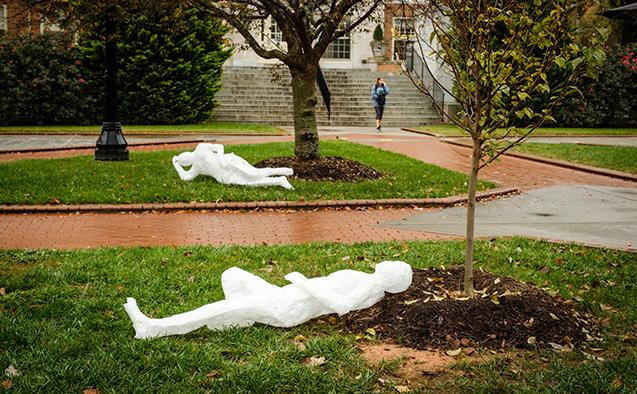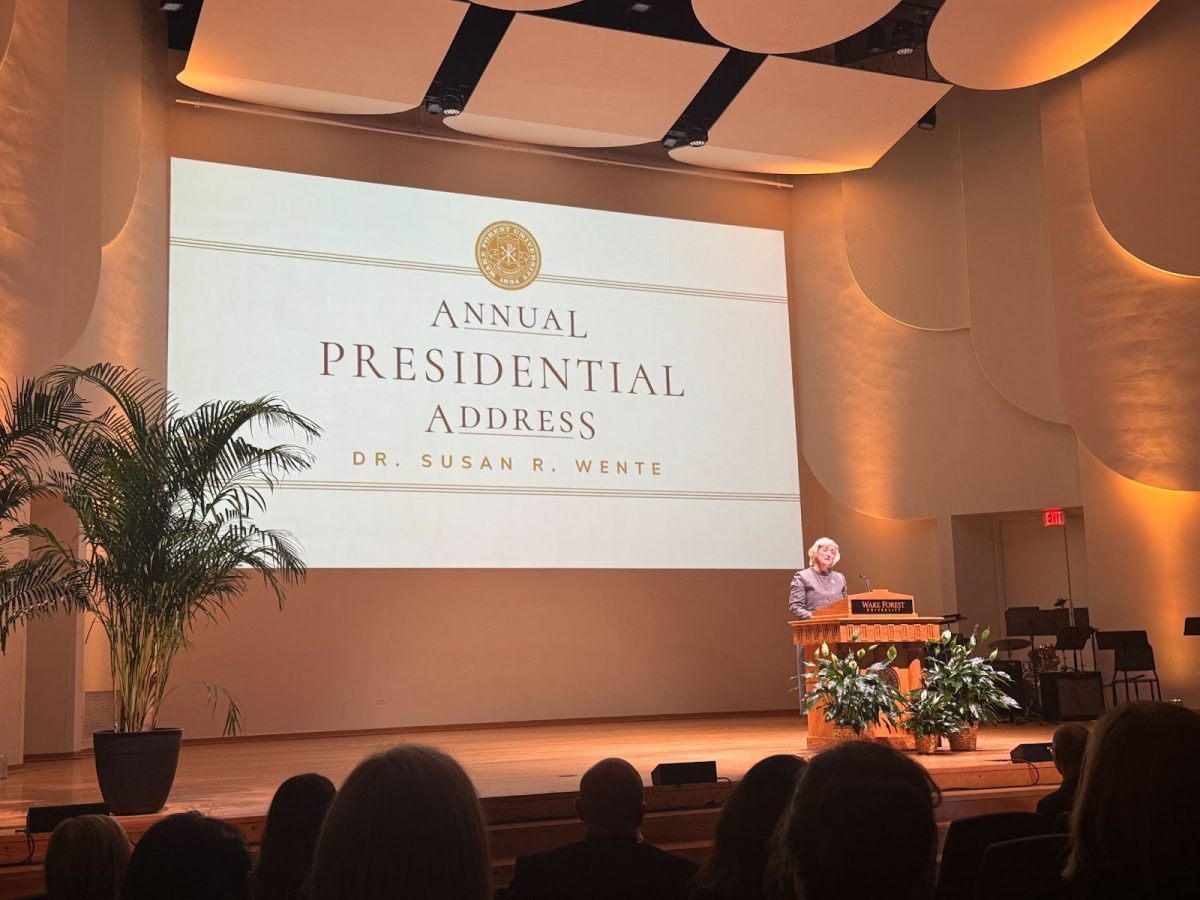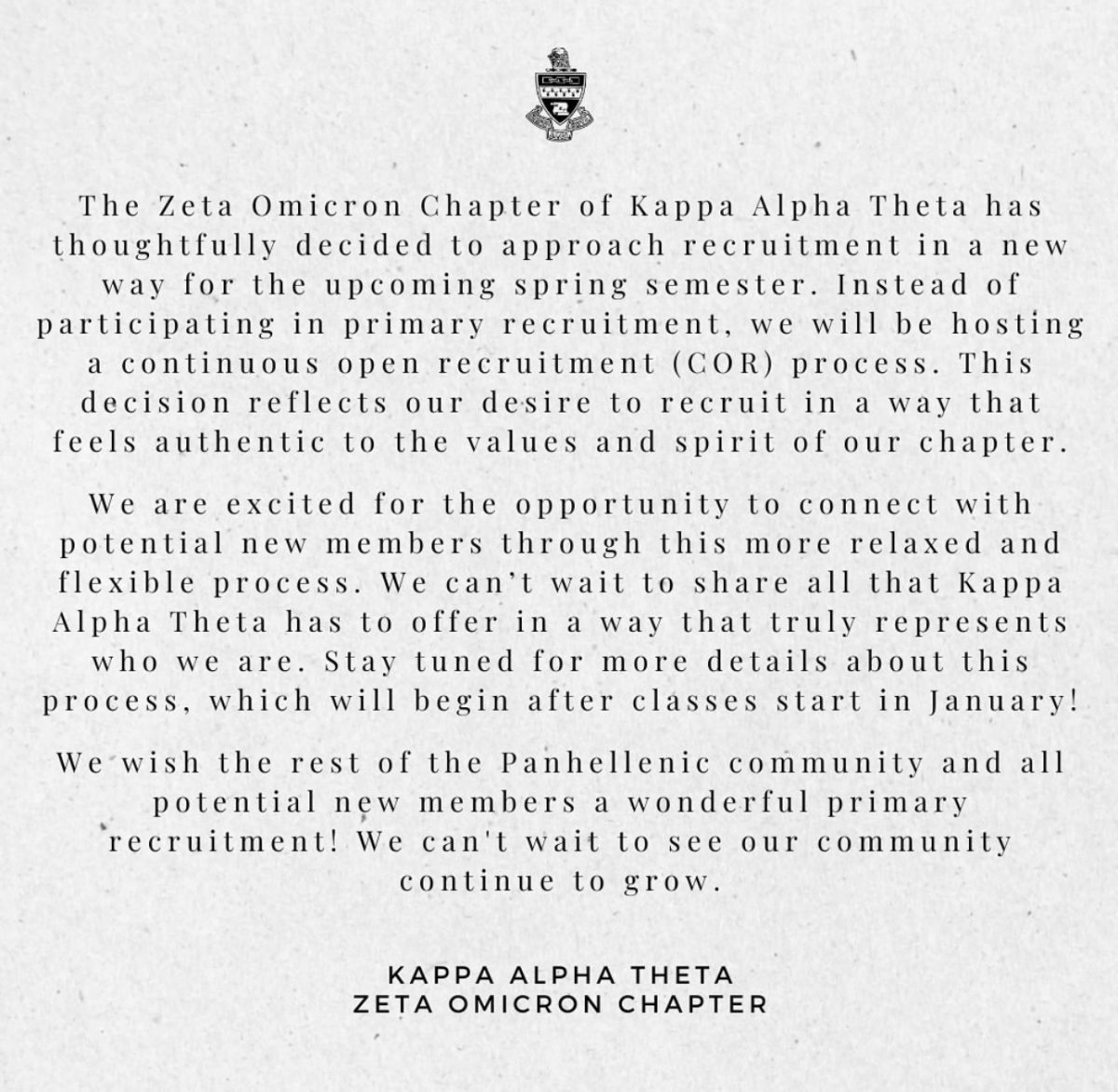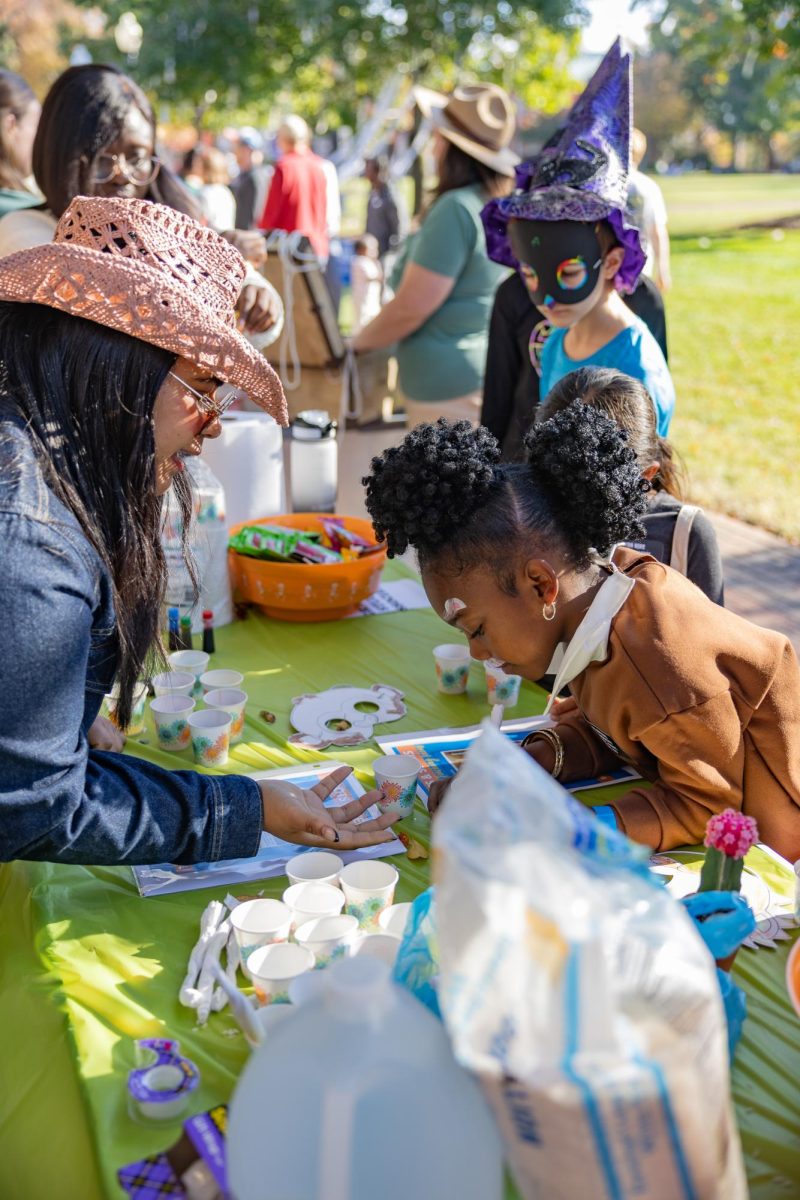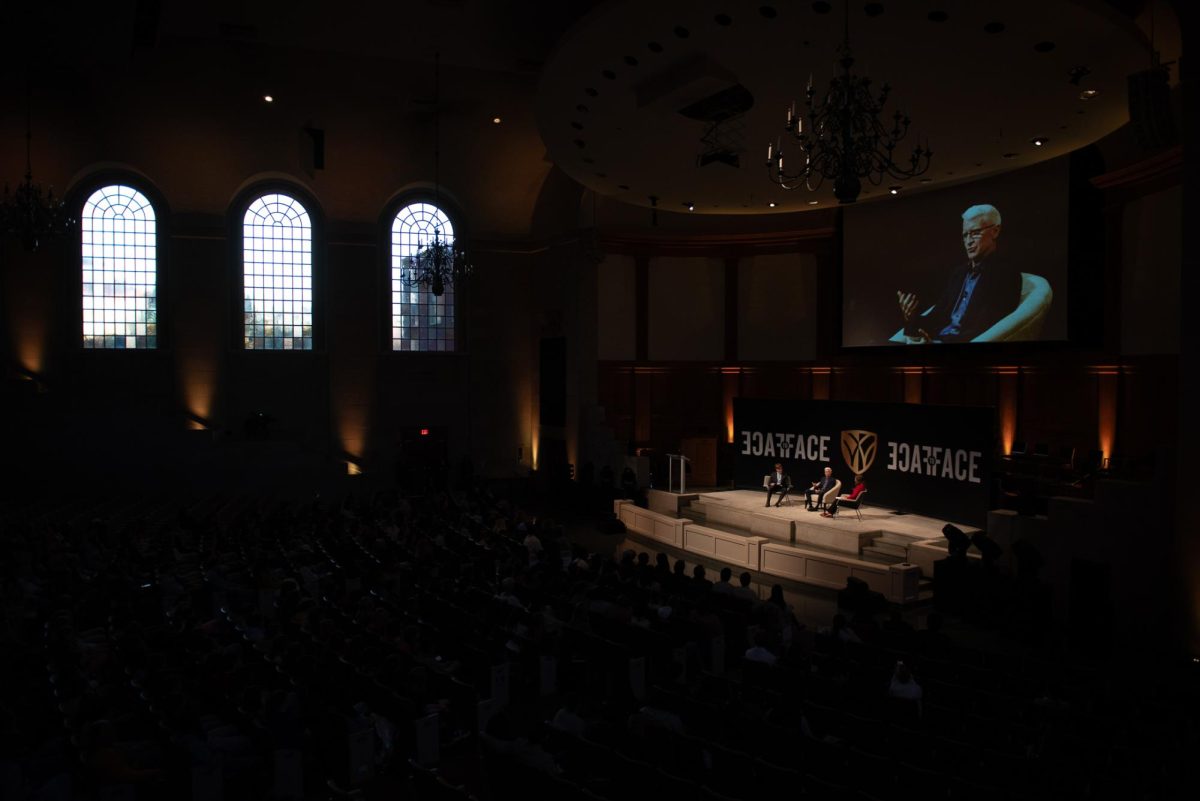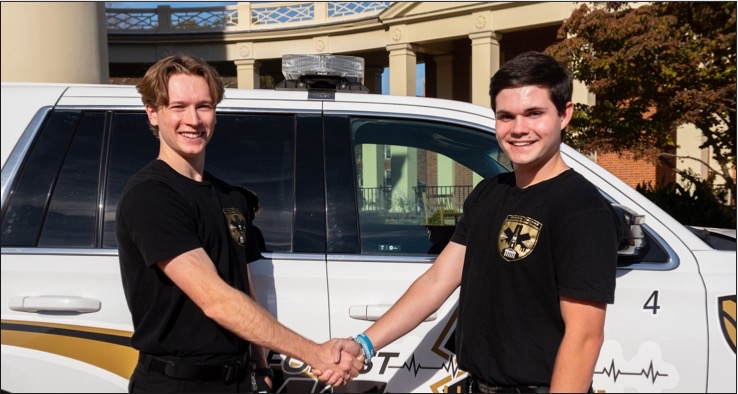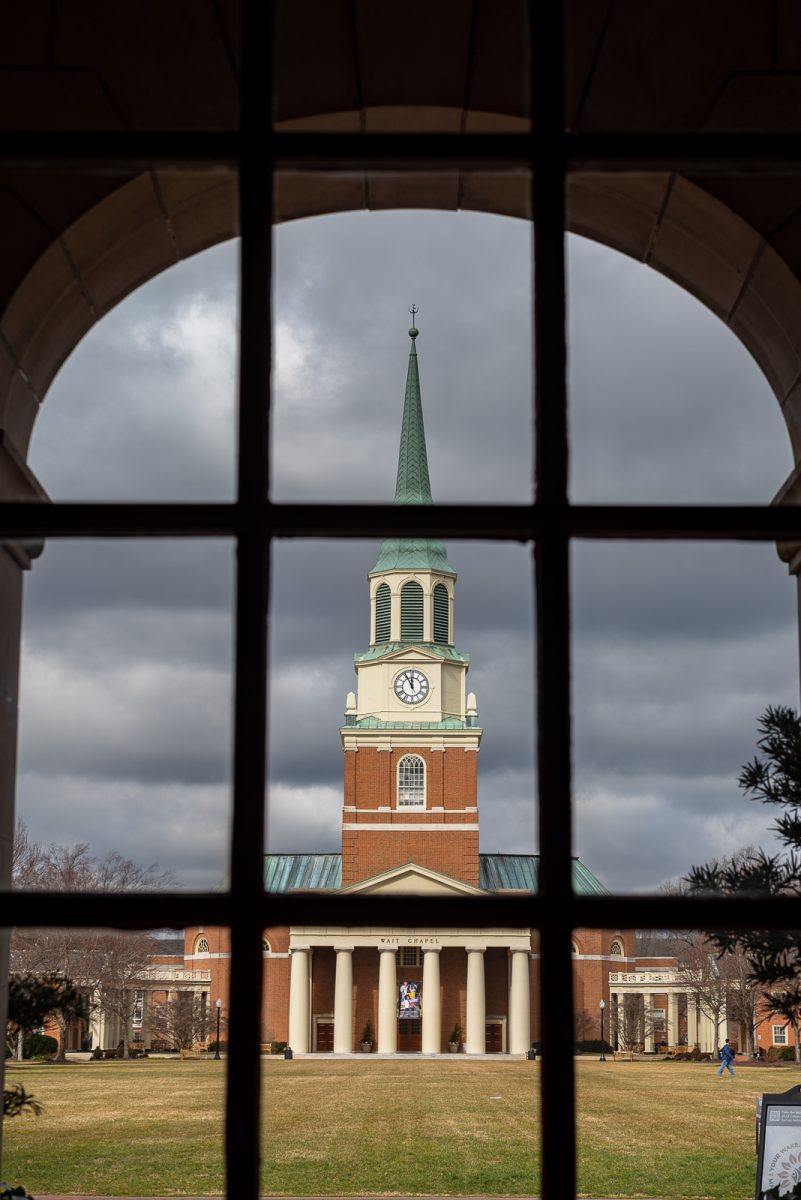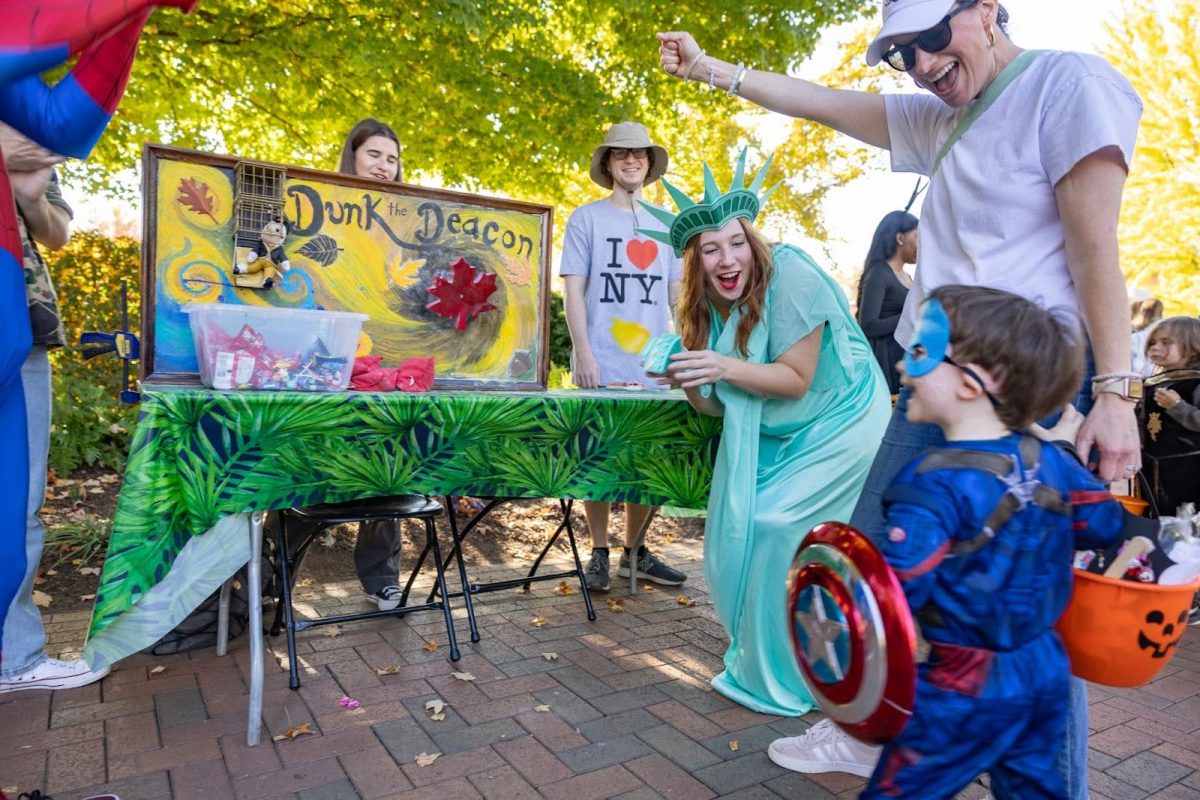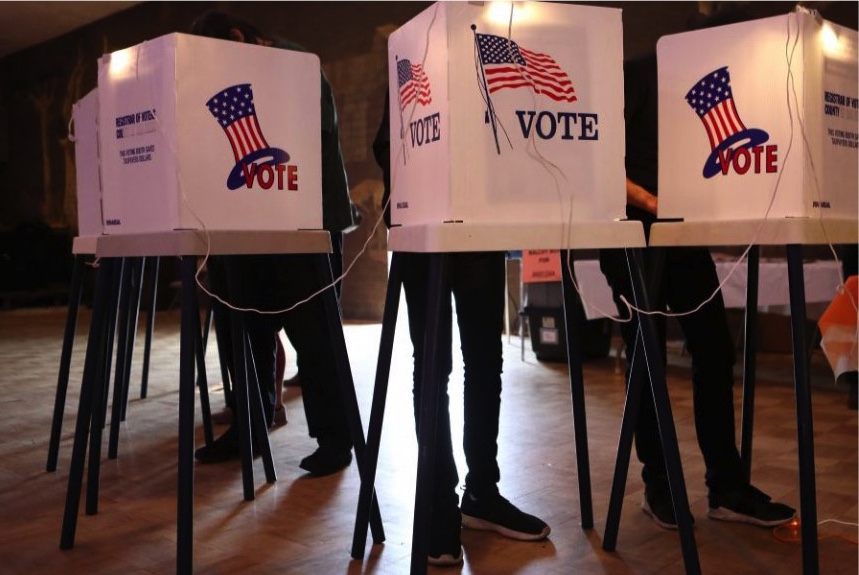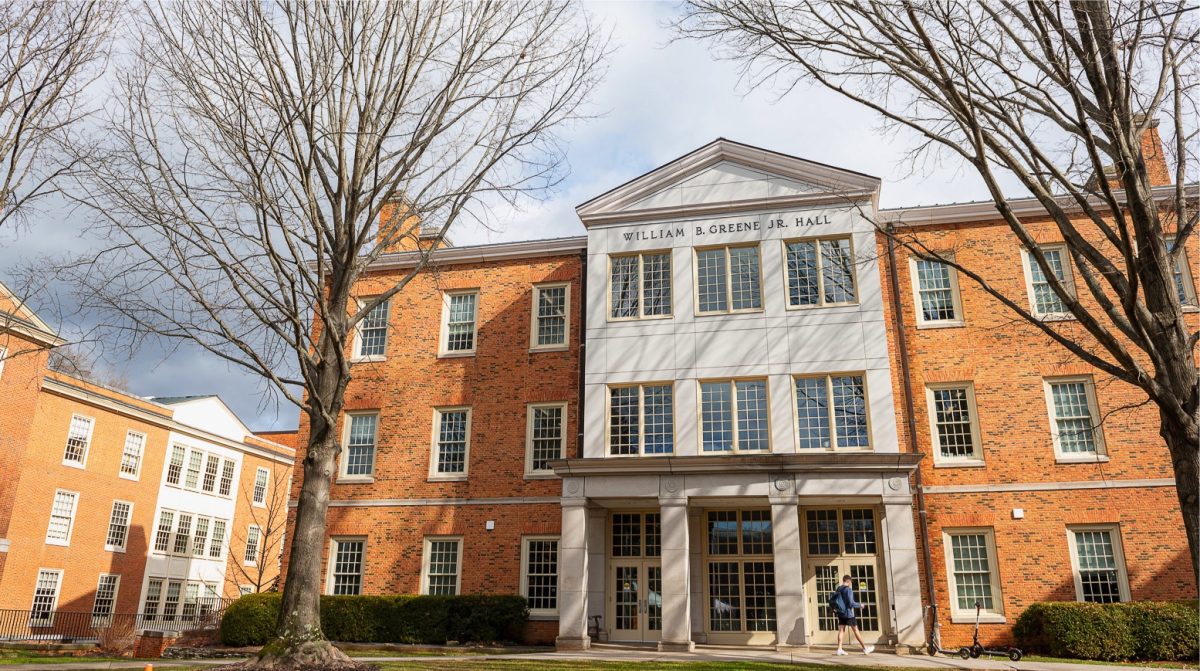You may have eaten your Pit omelet this morning by a mannequin made of tape or noticed the tombstones recently displayed near the Shorty’s outdoor patio.
Professor David Finn’s Public Art students introduced the public to their creations three weeks ago.
“This semester is probably the most diverse group of projects in terms of media,” Finn said, who teaches the course every other fall.
The artists sought individuality and authenticity in their projects, but many share a nature of reflection on the shared experiences of college students.
“I’ve noticed that many students try to keep a facade going about their daily life while struggling internally with bad thoughts or experiences,” said junior Brianna Casini. The Studio Art major directs “Insecurity Blanket,” a performance piece on Magnolia Quad wherein she weaves a large, black blanket on a makeshift loom, adding strips of fabric inscribed with student responses.
Casini believes students are taking her project, which continues at select times through Friday, seriously and “are speaking from their hearts.” She attributes this in part to being a student probing for reflections on other students’ insecurities, rather than a professor or organization.
Senior Studio Art majors Max Gordon and Anna Pugh also chose an interactive approach to their joint project, “Student Bodies.”
Gordon and Pugh are the architects behind the tape bodies strewn across campus.
Originally, six tape bodies were arranged around a table in the Tribble courtyard. Each body is ascribed instructions for a task based on positive or negative reflection: “Take me to a space where you belong or feel out of place; take me to a space where you laughed or cried.”
“The art isn’t just the student bodies but also the choreography of their movement,” Pugh said.
Pugh and Gordon conceived the project “in the spirit of guerrilla art,” a form that focuses more on cause and effect than material. The idea behind “Student Bodies” is that students have experiences in the same places, but, as encountering a tape body denotes, they do not know whether the place is fixed with others’ positive or negative experiences.
Typically, Gordon’s art revolves around drawing, or art intended for frames. He saw the class as an opportunity to reach more people. He explained that with “Student Bodies” he was interested in how students interact with the bodies but also hopes students find meaning in the instructions.
In a less intimate fashion, junior Jessica Wu’s piece intentionally sparked conversation, and was arguably one of the most controversial pieces.
Wu created “R.I.P. Hippocrates,” a series of tombstones with images and titles symbolizing what she believes are effects of the country’s lack of universal healthcare. One tombstone read “R.I.P. Food Security” over an image of the Winston-Salem skyline; another, “R.I.P Safe Water,” has an image of Michigan with a water glass on Flint. Others included “Mental Healthcare,” “Birth Parity,” “The Uninsured” and “Reproductive Healthcare.”
“People from Wake Forest are kind of removed from public health disparities, so I wanted to do something that was unavoidable and would maybe educate people,” Wu said.
Wu’s passion for political-based art flourished when she studied public art in Berlin. Wu described the city as “politically charged and progressive,” which she saw in the city’s profusion of public art. In a Berlin park, Wu created a feminist-slanted piece that “criticized institutionalized patriarchy in Germany.” When she returned to the U.S., Wu wanted to do something similar at Wake Forest with an American spin, but a campus committee disapproved.
She tried again, this time through the Public Art class and Dr. Finn, who is a practiced artist himself and chair of the Winston-Salem Public Art Commission. The class involves studying public art trends then creating a proposal to be submitted to the Public Arts Committee.
“I loved walking by my piece and seeing people’s reactions. Some definitely didn’t agree,” Wu said.
Senior Eli Bradley was one, calling the tombstones “mock-ish of things that aren’t dead.” Throughout the days the tombstones were exhibited, passersby stopped to look, discuss and take pictures.
“Traditionally art is something that is very elitist. Public art is there for anyone. I’m constantly impressed by how art can be a platform for motivating change,” Wu said.


